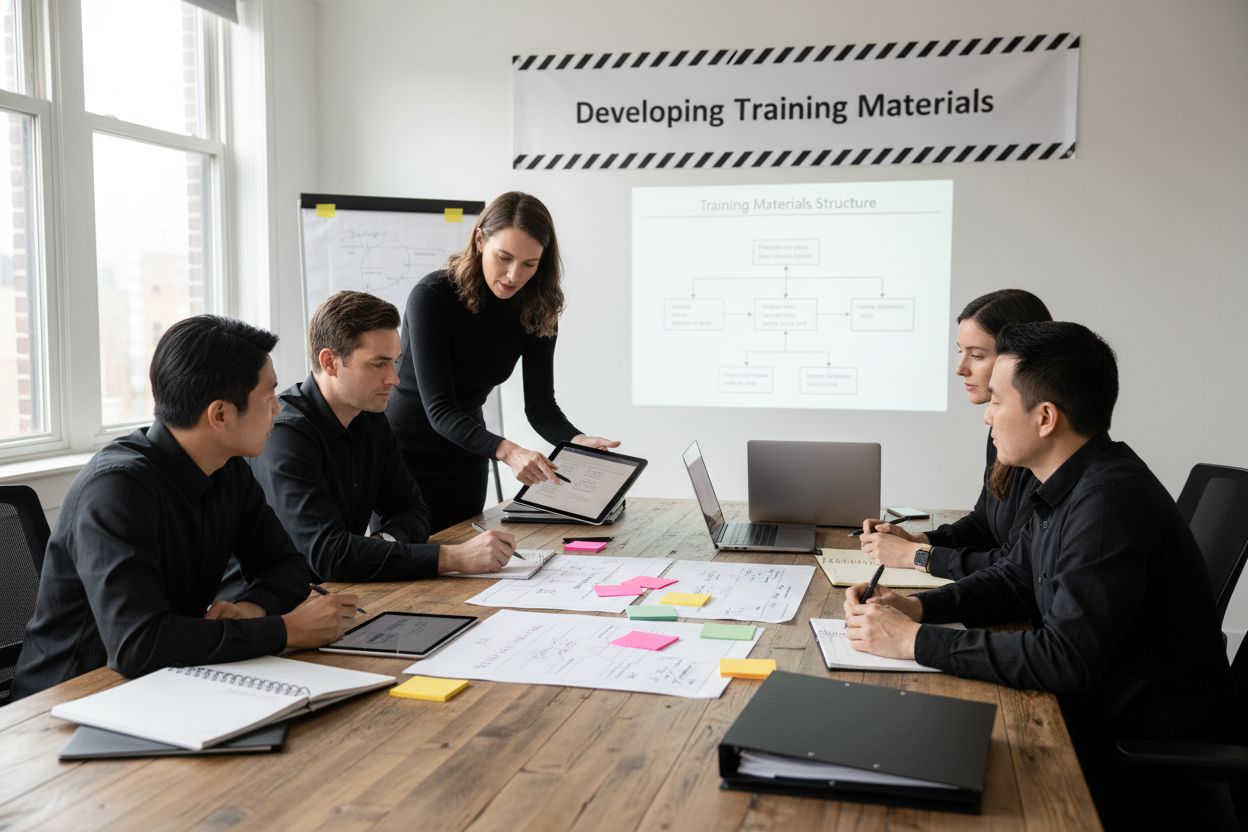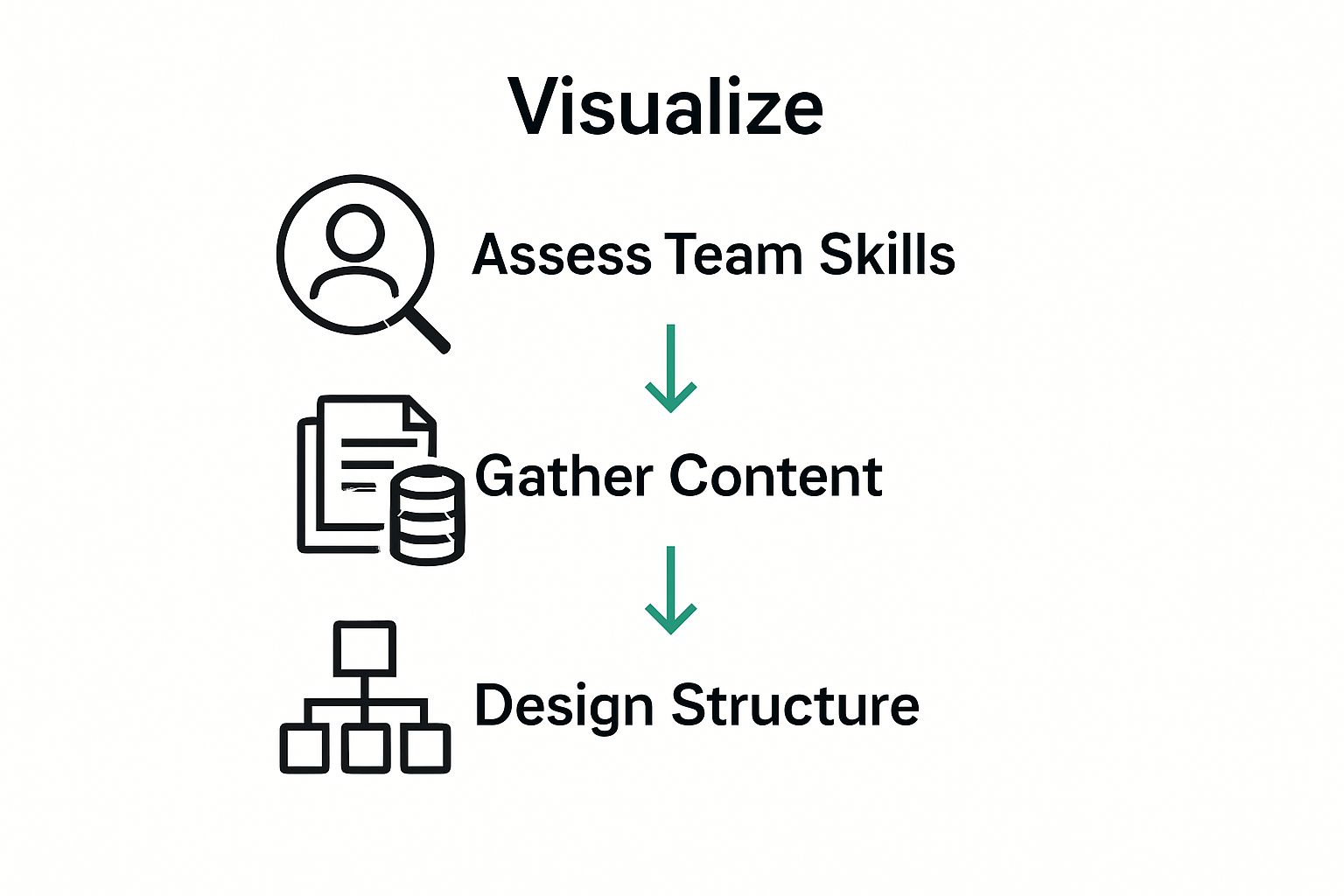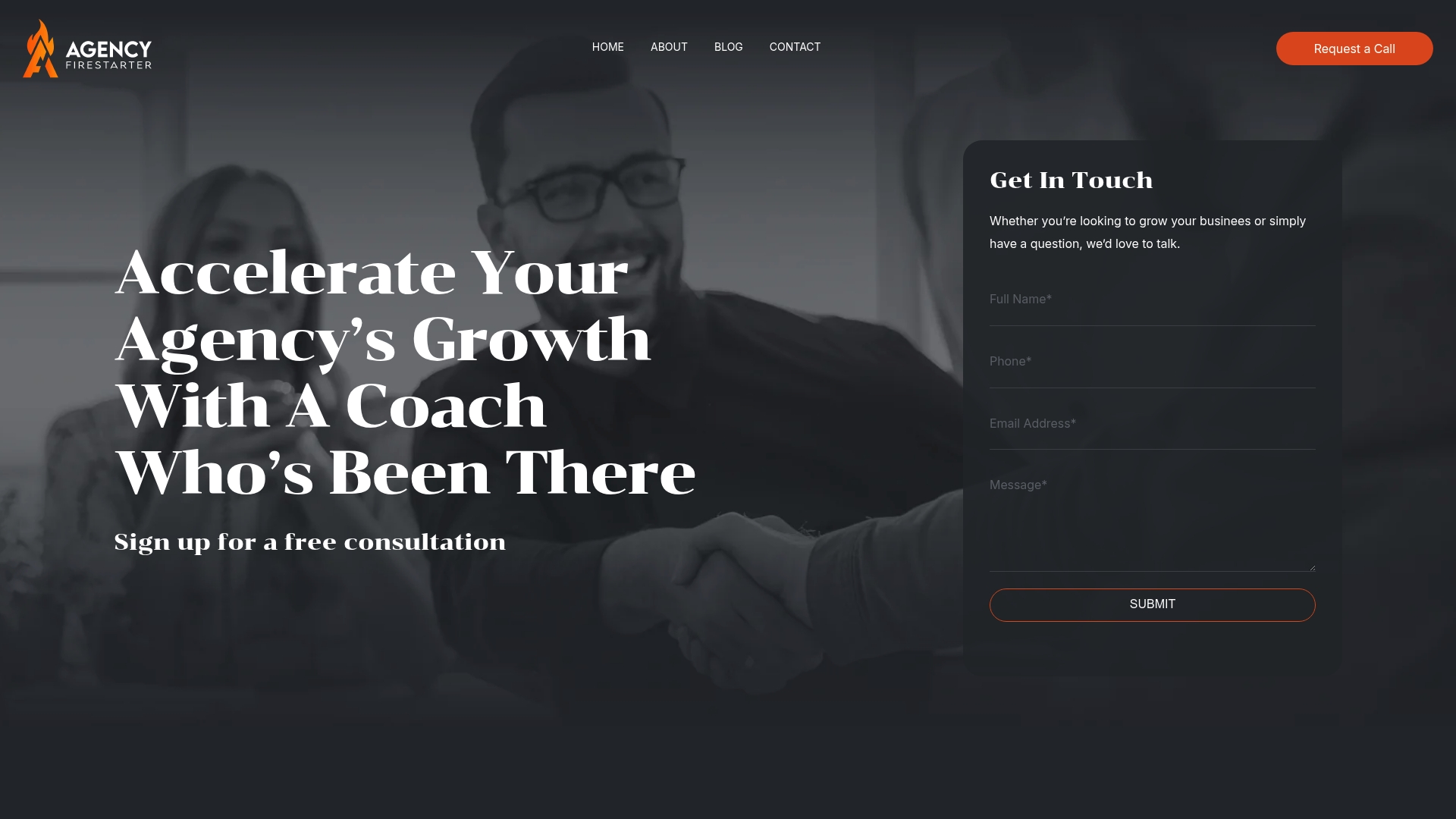
Master Developing Training Materials for Your Agency
Training materials can turn an underperforming agency team into industry leaders. Most teams spot skill gaps, but only about 30 percent of organizations say their training actually leads to real-world improvements. That sounds discouraging at first. The real surprise is that even small tweaks in how you develop these materials can unlock results your competitors only dream about.
Table of Contents
- Step 1: Assess Your Training Needs And Goals
- Step 2: Research And Gather Relevant Content
- Step 3: Design Your Training Materials Structure
- Step 4: Create Engaging And Effective Content
- Step 5: Review And Test Training Materials For Quality
- Step 6: Implement And Evaluate The Training Program
Quick Summary
| Key Point | Explanation |
|---|---|
| 1. Assess Training Needs Thoroughly | Conduct a skills audit to identify knowledge gaps specific to team members and overall objectives. |
| 2. Leverage Diverse Content Sources | Gather materials from both internal documents and external expert resources to enrich training. |
| 3. Create an Engaging Training Structure | Design a logical progression of content that caters to various learning styles to enhance retention. |
| 4. Test Materials for Effectiveness | Implement a comprehensive review process to ensure content clarity and real-world relevance. |
| 5. Monitor Implementation and Adjust | Track outcomes of the training program and remain flexible to adapt based on team feedback and performance. |
Step 1: Assess Your Training Needs and Goals
Developing training materials begins with a strategic assessment of your agency’s specific learning requirements. This initial phase is critical because it determines the entire trajectory of your training program. Without a clear understanding of what knowledge gaps exist and what skills your team needs to develop, you’ll create materials that miss the mark and fail to drive meaningful performance improvements.
Start by conducting a comprehensive skills audit across your entire organization. This means thoroughly evaluating current team competencies against the strategic objectives of your agency. You’ll want to identify specific areas where performance could be enhanced through targeted training. Look closely at individual team member performance reviews, client feedback, project outcomes, and internal metrics to pinpoint precise skill deficiencies.
To conduct an effective needs assessment, gather input from multiple sources. Schedule individual meetings with team leaders and department heads to understand their perspectives on skill gaps. Create structured surveys that allow team members to self-evaluate their competencies and confidence levels in key operational areas. Pay special attention to emerging skills required by evolving industry technologies and methodologies. For instance, digital marketing agencies might need training on new analytics platforms or emerging social media advertising techniques.
Key Assessment Methods Include:
- One-on-one performance interviews
- Anonymous skills gap surveys
- Review of recent project performance metrics
- Analysis of client satisfaction ratings
- Competitive benchmarking against industry standards
Once you’ve gathered comprehensive data, synthesize your findings into clear, actionable training goals. These goals should be specific, measurable, and directly aligned with your agency’s broader strategic objectives.
Learn more about creating effective agency training programs to ensure your development efforts translate into tangible business improvements.
Remember that developing training materials is an iterative process. Your initial assessment provides a foundational roadmap, but remain flexible and prepared to adjust your approach as your agency evolves and new skill requirements emerge.
Step 2: Research and Gather Relevant Content
Researching and gathering content is a pivotal step in developing training materials that genuinely transform your agency’s performance. This stage moves beyond surface-level information gathering and requires a strategic, multi-dimensional approach to collecting high-quality learning resources that will resonate with your team’s specific needs.
Begin by leveraging both internal and external knowledge sources. Your agency’s existing documentation, past project reports, client case studies, and team expertise represent a goldmine of potential training content. Review performance metrics, archived presentations, and successful campaign strategies to extract practical insights that can be translated into meaningful learning modules. Pay special attention to scenarios that demonstrate both exceptional achievements and challenging learning opportunities.
Expand your research beyond internal resources by exploring industry publications, professional webinars, academic journals, and expert-led online courses. Look for content that not only explains theoretical concepts but also provides actionable, real-world applications relevant to your agency’s specific domain. Academic and professional sources offer credible, in-depth perspectives that can significantly enrich your training materials. Seek out recent publications that reflect the latest industry trends, technological advancements, and emerging best practices.
Here is a summary table outlining recommended research channels for gathering training content and their primary purposes.
| Research Channel | Description | Primary Purpose |
|---|---|---|
| Professional association journals | Industry publications from reputable professional groups | Obtain up-to-date best practices and insights |
| Industry-specific online learning platforms | Digital platforms offering curated industry courses | Expand expertise with targeted, current modules |
| Academic research databases | Scholarly sources for in-depth analysis | Access credible, evidence-based information |
| Recorded conference presentations | Video/audio archives of industry events | Gain exposure to expert insights and trends |
| Expert-authored books and digital publications | Books and articles by recognized leaders | Deepen understanding of advanced topics |
Recommended Research Channels:
- Professional association journals
- Industry-specific online learning platforms
- Academic research databases
- Recorded conference presentations
- Expert-authored books and digital publications
Explore our comprehensive guide on content marketing strategies to understand how to effectively curate and adapt external content for your training initiatives. The key is not just collecting information, but synthesizing it into a coherent, engaging learning experience that addresses the specific skill gaps identified in your initial needs assessment.
As you gather content, maintain a systematic approach. Create a centralized repository where collected materials are tagged, categorized, and easily accessible. This will streamline the subsequent stages of developing your training materials and ensure that no valuable insights are overlooked during the design process.
Step 3: Design Your Training Materials Structure
Designing the structure of your training materials represents a critical transformation point where raw research converts into a purposeful learning journey. This step requires strategic architectural thinking that balances educational effectiveness with engaging presentation, ensuring your content not only informs but genuinely motivates learners to absorb and apply new skills.
Begin by creating a comprehensive learning blueprint that maps out the entire training experience from introduction to final assessment. Organize your content using a logical progression that builds complexity gradually, starting with foundational concepts and progressively introducing more advanced techniques. This approach prevents learner overwhelm and allows participants to construct knowledge incrementally. Consider using a modular design where each section builds upon previous learning, creating a cohesive narrative that connects individual components into a meaningful whole.
Carefully consider your audience’s learning preferences and professional backgrounds when structuring materials. Different learning styles require varied instructional approaches. Some team members might prefer visual demonstrations, while others excel with text-based explanations or interactive scenarios. Incorporate diverse learning formats such as written guides, video tutorials, practical worksheets, real-world case studies, and interactive simulations. These varied formats ensure broader engagement and improved knowledge retention across different learning preferences.
Key Structural Considerations:
- Clear learning objectives for each module
- Logical progression of complexity
- Multiple learning format options
- Built-in assessment checkpoints
- Opportunities for practical application
Explore our agency training program essentials to understand how comprehensive program design drives meaningful skill development. Your materials should include clear markers of progress, such as knowledge checks, practical exercises, and self-assessment tools that help learners understand their evolving capabilities.
Finalize your structure by creating a comprehensive outline that serves as a roadmap for content creation. This outline should detail each section’s purpose, expected learning outcomes, and specific instructional strategies. By meticulously planning your training materials’ architecture, you transform disconnected information into a powerful, coherent learning experience that drives real professional growth.

Step 4: Create Engaging and Effective Content
Creating engaging and effective training content transforms your carefully researched materials into a powerful learning experience that resonates with your team. This stage demands a delicate balance between informative depth and compelling presentation, ensuring that your training materials not only communicate knowledge but also inspire genuine learning and skill development.
Storytelling becomes your most powerful tool in crafting compelling training content. Move beyond dry, technical explanations by embedding real-world scenarios, agency-specific case studies, and practical examples that demonstrate the direct application of each concept. Imagine walking your team through actual client challenges, showing how specific skills solved complex problems. This approach connects abstract learning to tangible professional outcomes, making the content immediately relevant and memorable.
Develop content that speaks directly to your team’s professional context. Use language that reflects your agency’s unique culture and operational environment. Incorporate practical examples drawn from your own agency’s experiences, highlighting both successful strategies and instructive failures. This personalized approach creates an immediate sense of relevance and engagement. Write as though you’re having a direct conversation with your team members, using clear, conversational language that breaks down complex concepts into digestible insights.
Content Creation Strategies:
- Use real agency scenarios as learning examples
- Incorporate visual storytelling techniques
- Create interactive learning elements
- Design content with clear, actionable takeaways
- Include practical skill demonstration sections
Discover our strategies for effective client communication to understand how powerful communication techniques can enhance your training materials. By creating content that feels both professional and personal, you transform training from a mandatory exercise into an inspiring journey of professional growth.
Incorporate visual learning techniques that accommodate different learning styles. Integrate multimedia elements like infographics, short video tutorials, interactive worksheets, and annotated process diagrams. These visual tools break up text-heavy content and provide multiple entry points for understanding complex concepts. Remember that effective content is not just about information transmission but about creating an engaging learning experience that motivates continuous professional development.

Step 5: Review and Test Training Materials for Quality
The review and testing phase represents a critical quality assurance checkpoint in developing training materials that will ultimately determine their effectiveness and impact. This stage transforms your carefully crafted content from a theoretical construct into a robust, field-tested learning experience that can genuinely drive performance improvements across your agency.
Comprehensive testing requires a multi-layered approach that goes beyond simple proofreading. Begin by conducting an initial internal review with a diverse group of team members from different skill levels and departments. This approach ensures your materials are accessible, clear, and relevant across various professional backgrounds. Invite team members to provide candid feedback, focusing on content comprehension, practical applicability, and overall engagement. Look for potential areas of confusion, overly complex explanations, or sections that might require additional context or clarification.
Implement a structured testing process that simulates real-world learning scenarios. Create pilot test groups that will work through the training materials as if they were actual participants. Observe their interactions, track their progress, and collect detailed feedback on everything from content clarity to learning flow. Pay close attention to how different team members navigate the materials, noting where they might struggle or become disengaged. Quantitative metrics like completion rates and knowledge retention are crucial, but qualitative insights provide deeper understanding of the learning experience.
Quality Review Checklist:
- Verify content accuracy and relevance
- Test materials with representative user groups
- Collect both quantitative and qualitative feedback
- Assess learning material accessibility
- Validate practical application potential
Explore our guide on effective team training strategies to understand how comprehensive testing drives training excellence. According to research on learning material development, gathering systematic feedback through surveys and focus groups significantly enhances the refinement process.
Remember that testing is an iterative process. Be prepared to make multiple rounds of revisions based on the insights you gather. The goal is not perfection on the first attempt, but continuous improvement that ensures your training materials remain dynamic, relevant, and truly impactful for your agency’s professional development needs.
This checklist table organizes the key quality review steps to ensure your training materials are effective before final rollout.
| Review Criteria | Description |
|---|---|
| Content accuracy | Confirm all information is up-to-date and correct |
| User group testing | Test materials with employees from varied backgrounds |
| Feedback collection | Gather both numbers (metrics) and written comments |
| Accessibility check | Verify everyone can access and use the materials |
| Practical relevance | Ensure instructions match real agency tasks |
| Iterative revisions | Update content based on user feedback |
| Engagement tracking | Monitor and address areas of user confusion |
Step 6: Implement and Evaluate the Training Program
Implementing your training program marks the critical transition point where meticulously developed materials transform into tangible learning experiences. This stage demands a strategic, nuanced approach that balances structured delivery with flexibility, ensuring your team can absorb new skills effectively while maintaining their regular operational responsibilities.
Successful implementation begins with a carefully planned rollout strategy. Select an initial pilot group that represents a cross-section of your agency’s talent, providing a comprehensive test of your training materials’ effectiveness. This approach allows you to identify potential implementation challenges without disrupting entire team operations. Create a realistic timeline that integrates learning modules into existing workflows, recognizing that professional development must coexist with daily business demands. Consider offering multiple learning format options such as self-paced online modules, small group workshops, and individual coaching sessions to accommodate different learning preferences and scheduling constraints.
Develop a robust evaluation framework that goes beyond traditional metrics. While completion rates and test scores provide basic insights, the true measure of training effectiveness lies in observable performance improvements. Track key performance indicators that demonstrate the direct impact of your training program. Look for tangible changes such as increased client satisfaction rates, improved project delivery times, enhanced team collaboration, and measurable skill progression. Implement regular check-ins and performance assessments that allow participants to reflect on their learning journey and provide candid feedback about the training experience.
Implementation Tracking Strategies:
- Create personalized learning pathways
- Establish clear performance benchmarks
- Design flexible learning schedules
- Implement continuous feedback mechanisms
- Monitor both qualitative and quantitative outcomes
Learn more about effective team training strategies to refine your implementation approach. According to comprehensive research on training program evaluation, ongoing assessment using participant feedback, performance tracking, and outcome analysis is crucial for continuous improvement.
Remember that implementation is not a one-time event but an evolving process. Stay adaptable, listen to your team’s experiences, and be prepared to make real-time adjustments. Your training program should feel like a collaborative growth opportunity, not a mandatory exercise, ultimately driving both individual professional development and broader agency success.
Transform Your Agency Training Into Real Results
You know the frustration of investing hours in developing training materials, only to see your team disengaged or your business growth plateau. The article highlighted how vital it is to start with a clear needs assessment, create practical learning paths, and ensure your content is actually driving performance. But even with the best frameworks, many agency leaders struggle to turn internal knowledge into measurable outcomes. You want training that inspires real change, boosts skills, and supports your ambitious agency goals.

Let Agency Firestarter show you how to bridge the gap between solid training materials and agency-wide excellence. When you partner with us, you get access to proven coaching, expert strategies, and resources tailored for digital marketing and consulting agencies. Check out how our business coaching programs help you build scalable systems or see how team and leadership development supports long-term skill growth. Visit Agency Firestarter now to schedule your free consultation. Bring your training program to life and give your agency a competitive edge today.
Frequently Asked Questions
What are the key steps in developing training materials for my agency?
The key steps include assessing training needs and goals, researching and gathering relevant content, designing the training material structure, creating engaging content, reviewing and testing for quality, and implementing and evaluating the training program.
How can I assess the training needs of my agency effectively?
Conduct a comprehensive skills audit, gather input through one-on-one interviews and anonymous surveys, review performance metrics, and analyze client feedback to pinpoint specific skill deficiencies.
What types of content should I include in my training materials?
Include a mix of resourced from internal documentation, case studies, industry publications, visual aids, and interactive elements that cater to various learning styles and reinforce key concepts.
How do I evaluate the effectiveness of the training program after implementation?
Track key performance indicators like client satisfaction rates and project delivery times, gather participant feedback, and assess improvements in skill application to measure the direct impact of the training program.
Recommended
- Agency Training Programs: Essentials for Growth and Success – Business Coach For Digital Marketing Companies, SEO, Social Media Agencies
- 8 Effective Team Training Ideas to Boost Performance – Business Coach For Digital Marketing Companies, SEO, Social Media Agencies
- Talent Development Planning for Agencies and Service Firms – Business Coach For Digital Marketing Companies, SEO, Social Media Agencies
- Coaching Versus Mentoring: Key Differences for Agencies – Business Coach For Digital Marketing Companies, SEO, Social Media Agencies
